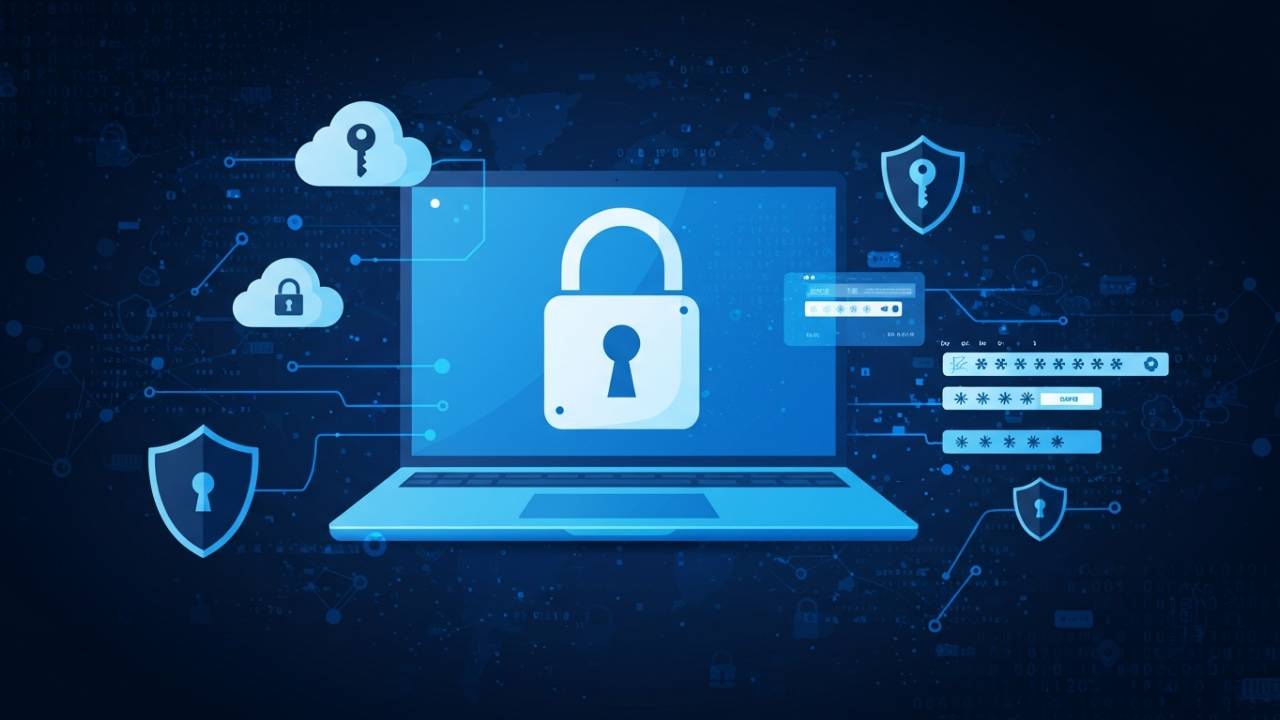In the world of network security, hands-on experience is crucial. While theoretical knowledge of security protocols and best practices is important, being able to apply that knowledge in real-world scenarios sets skilled professionals apart. Real-world labs provide the ideal environment to bridge the gap between theory and practice, allowing you to sharpen your skills in a safe yet realistic environment.
This guide will explore the importance of real-world labs for network security training, the skills they help you develop, and the best platforms for gaining this experience. By the end, you’ll have a clear understanding of how to make the most of these labs to enhance your network security knowledge.
What Are Real-World Labs for Network Security Training?
Definition of Real-World Labs
Real-world labs are virtual or physical environments designed to simulate real network security challenges. These labs replicate actual systems and networks you’d find in a corporate or enterprise environment. Within these simulated environments, you can test security measures, discover vulnerabilities, and even attempt attacks to understand the methods hackers use.
Unlike traditional theoretical learning methods, real-world labs allow you to engage directly with network security tools, attack vectors, and defense strategies. They serve as a safe place to make mistakes, troubleshoot, and ultimately gain practical experience.
Why Real-World Labs Matter
Real-world labs are vital because they expose you to the complexities of real networks. The key benefits include:
-
Practical Experience: You can work directly with the tools and technologies used in the field, such as firewalls, penetration testing software, and intrusion detection systems.
-
Safe Learning Environment: Labs provide an environment where you can make mistakes without real-world consequences, helping you learn from your errors.
-
Hands-on Troubleshooting: These labs allow you to practice solving actual network security problems, helping you gain the problem-solving skills required in a professional setting.
Why You Should Choose Real-World Labs Over Traditional Learning Methods
Hands-On Learning is Key
It’s one thing to read about network security, and another to apply it in a practical setting. While textbooks and videos provide useful information, they often fail to demonstrate how things work in real-world scenarios. By using real-world labs, you can interact with systems that are just like the ones you’d protect in a job, ensuring that you have the practical experience necessary to deal with security issues effectively.
Solving Problems Like a Pro
Real-world labs help you hone your ability to solve problems quickly and efficiently. For example, when faced with a simulated attack, you’ll need to identify the source, stop the attack, and remediate the system—all under time pressure. This kind of experience is invaluable when working in a high-stakes environment where network breaches can cost businesses millions.
Key Skills You’ll Develop in Real-World Labs
Vulnerability Assessment and Exploitation
In a real-world lab, you’ll learn to identify and exploit vulnerabilities in systems, networks, and applications. By using tools like Metasploit, Burp Suite, and Nmap, you’ll understand how attackers gain access to vulnerable networks. You’ll also learn how to patch these vulnerabilities to prevent future exploitation.
-
Skills Developed:
-
Identifying weaknesses in network infrastructure.
-
Practicing the use of penetration testing tools.
-
Understanding how hackers exploit common security flaws like buffer overflows, SQL injections, and cross-site scripting (XSS).
-
Penetration Testing
Penetration testing (or ethical hacking) is a critical skill for any network security professional. In real-world labs, you simulate attacks on network systems to identify weaknesses before malicious hackers can exploit them. These hands-on experiences teach you how to:
-
Skills Developed:
-
Perform network mapping and reconnaissance.
-
Identify security loopholes in different network layers.
-
Use exploit frameworks to gain unauthorized access to systems.
-
Provide actionable recommendations to mitigate security risks.
-
Incident Response and Forensics
When a network breach occurs, the ability to respond quickly and effectively is crucial. Real-world labs help you practice how to identify and respond to various types of cyberattacks. In addition, you’ll gain experience in gathering digital evidence to conduct forensic investigations, which is essential for understanding how an attack took place and preventing future occurrences.
-
Skills Developed:
-
Analyzing logs and network traffic for signs of suspicious activity.
-
Developing and implementing incident response plans.
-
Conducting forensic analysis to trace attack vectors and identify perpetrators.
-
Network Configuration and Hardening
Securing a network requires a solid understanding of how to configure network devices like routers, firewalls, and switches. Real-world labs allow you to practice network configuration and hardening techniques, such as setting up firewalls, configuring VPNs, and implementing intrusion prevention systems (IPS). These skills are essential for creating secure network infrastructures.
-
Skills Developed:
-
Configuring network devices to block unauthorized access.
-
Hardening operating systems and applications against attacks.
-
Setting up and managing network security monitoring systems.
-
Top Platforms Offering Real-World Labs for Network Security Training
There are several excellent platforms where you can access real-world labs for network security training. These platforms offer a range of learning experiences, from beginner to advanced levels.
Hack The Box (HTB)
-
Overview: Hack The Box offers a wide array of hands-on cybersecurity challenges that mimic real-world security environments. You can practice ethical hacking, network security, and penetration testing techniques in a secure, interactive platform.
-
Why Use It: HTB provides a vast selection of machines and challenges that are updated regularly, offering something for every skill level.
-
Key Features:
-
Wide range of challenges and virtual machines (VMs).
-
Strong community and discussions around solutions.
-
Realistic, detailed environments that simulate common enterprise setups.
-
TryHackMe
-
Overview: TryHackMe is a fantastic platform for beginners looking to break into network security. It offers structured, guided learning paths that walk you through different attack and defense scenarios.
-
Why Use It: TryHackMe’s rooms are designed to teach specific security concepts and tools, with hands-on labs that make it easy to progress through different stages.
-
Key Features:
-
Easy-to-follow instructions and guided learning.
-
Engaging, interactive exercises.
-
Focus on both offensive and defensive security.
-
RangeForce
-
Overview: RangeForce’s cloud-based platform offers simulated, real-time attack/defense scenarios. It’s particularly suited for professionals looking to sharpen their skills in a live environment.
-
Why Use It: RangeForce excels in creating customizable learning paths for organizations and individuals, helping you build comprehensive cybersecurity skills.
-
Key Features:
-
Real-time security exercises and simulations.
-
Cloud-based, accessible from anywhere.
-
Emphasis on team-based collaborative training.
-
Cybrary
-
Overview: Cybrary offers a comprehensive range of cybersecurity courses and virtual labs, with a focus on certifications like CISSP, CEH, and CompTIA Security+.
-
Why Use It: If you’re aiming to pass industry certifications, Cybrary provides practical, lab-based training that aligns with certification exams.
-
Key Features:
-
Wide range of courses from beginner to expert.
-
Certification-focused virtual labs.
-
Continuous updates to reflect current security trends and practices.
-
Penetration Testing Practice Labs (PentesterLab)
-
Overview: PentesterLab offers downloadable vulnerable machines for ethical hacking practice. These labs are designed to help you gain hands-on experience in penetration testing.
-
Why Use It: PentesterLab’s real-world vulnerable environments are perfect for users looking to deepen their understanding of offensive security.
-
Key Features:
-
Detailed walkthroughs and solutions.
-
A focus on penetration testing and exploitation techniques.
-
Comprehensive exercises that teach key security concepts.
-
How to Get the Most Out of Real-World Labs
Set Clear Learning Goals
Before diving into real-world labs, it’s important to establish clear objectives. Whether you want to specialize in penetration testing, vulnerability assessment, or network defense, having goals in mind will help you focus your efforts and track your progress.
Track Your Progress and Reflect
Keeping a log of your activities in each lab can be extremely helpful. Write down what worked, what didn’t, and any challenges you faced. Reflecting on your experiences will help you improve and avoid repeating mistakes in the future.
Join a Community for Support
Real-world labs often come with active communities that can help you when you’re stuck. Participating in these forums not only expands your knowledge but also provides networking opportunities with like-minded individuals.
Practice Consistently
Network security is a constantly evolving field. Regular practice is essential for staying up-to-date with the latest tools and attack techniques. Set aside time each week to complete new challenges or revisit old ones.
Advanced Labs for Experienced Network Security Professionals
Creating Custom Labs
Once you’ve mastered the basics, consider creating custom labs to challenge yourself further. Platforms like VirtualBox and VMware allow you to set up virtual networks, replicate attack scenarios, and configure security defenses based on real-world needs.
Advanced Threat Hunting and Red Teaming
For seasoned professionals, real-world labs provide an opportunity to simulate advanced persistent threats (APTs) and practice threat hunting. You can also participate in Red Team exercises to simulate sophisticated attacks while defending a network in Blue Team exercises.
Lab-Based Certification Preparation
If you’re preparing for certifications like OSCP, CEH, or CISSP, real-world labs provide the hands-on experience needed to excel in these exams. Many labs are specifically designed to mirror the testing environments of these certification exams.
The Benefits of Real-World Labs for Network Security Training
Practical Experience
Real-world labs give you valuable hands-on practice, helping you become proficient with the same tools used by cybersecurity professionals. You’ll gain experience dealing with live networks, managing security incidents, and executing penetration tests.
Improved Problem-Solving Skills
Dealing with real-world security issues requires critical thinking and quick decision-making. Real-world labs simulate these environments, allowing you to develop the problem-solving skills needed in real-life situations.
Better Job Readiness
Hands-on experience with real-world labs significantly boosts your employability. Many employers prefer candidates with practical training, and real-world labs provide the skills and confidence you need to succeed in the field.
My Opinion
Real-world labs are an essential component of network security training. They allow you to acquire practical skills that are vital for a career in cybersecurity. By participating in labs, you’ll develop the knowledge, experience, and problem-solving abilities necessary to tackle real-world network security challenges.
Whether you’re a beginner looking to gain practical experience or an experienced professional preparing for advanced certifications, real-world labs are an invaluable tool in your cybersecurity journey. Start exploring the platforms mentioned in this guide, set your learning goals, and begin practicing today. With time, you’ll develop the expertise to excel in network security roles.
















Leave a Reply